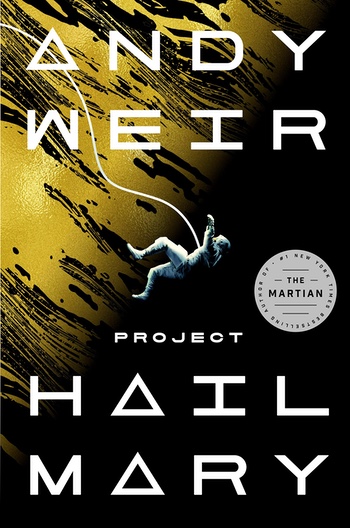Review: Project Hail Maryby Jeff Foust
|
| Grace is a lot like The Martian’s Mark Watney, using intelligence, ingenuity, and determination to figure out where he is and how he can carry out his mission. |
The book opens with a man awakening in a facility of some kind, tended to by robots. He initially has no memory of where he is or why he is there or even who he is. Gradually, his memory returns: he is Ryland Grace, an astrobiologist who left academia to become a junior high school science teacher, only to be pulled into the project of the book’s title after scientists discover organisms dubbed “astrophages” in interplanetary space, feeding off sunlight and growing at an exponential rate. Their growth threatens to lower the Sun’s luminosity and thus life on Earth.
Grace discovers he is on a spaceship sent to a nearby star, the only one in the stellar neighborhood not exhibiting dimming caused by astrophages, to try and find a solution: a “Hail Mary” bid. He also discovers, though, that the other two members of the crew did not survive the induced coma they were put in for the long journey. There is no one for Grace to turn to for help—well, no other humans, at least.
Grace is a lot like The Martian’s Mark Watney, using intelligence, ingenuity, and determination to figure out where he is and how he can carry out his mission. In the early pages of the book, for example, he uses a stopwatch and a makeshift pendulum to conclude he is in space, accelerating at 1.5g. He is also, like Watney, more than a little sarcastic, something that comes through both while in space and in flashbacks to his time on Earth before the mission. (The only problem with those flashbacks is that they cause the book’s narrative to go back and forth between the present and the past, a zigzagging that can get tiring.)
If you’re looking for a realistic account of humanity’s future in space, Project Hail Mary isn’t the book for you: hopefully we won’t have to deal with astrophages stealing the Sun’s luminosity. However, if you liked the drama of The Martian, one of human versus nature and grounded in science, then Project Hail Mary is an entertaining book. Weir may not be the inspiration for Mars exploration that space advocates once thought, but as a fiction writer that’s not his job. It’s up for those advocates to make the case for sending real astronauts to Mars.
Note: we are using a new commenting system, which may require you to create a new account.
